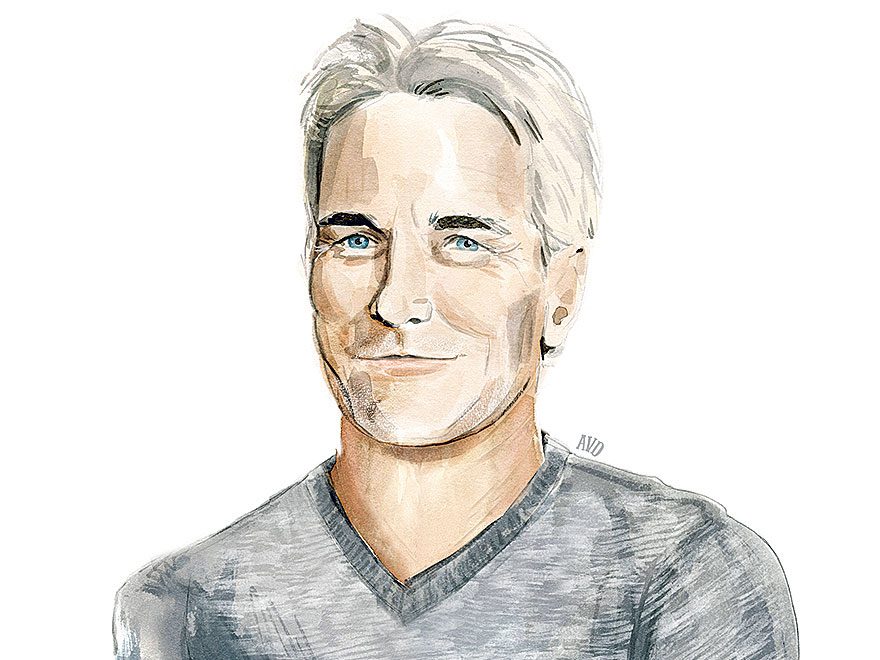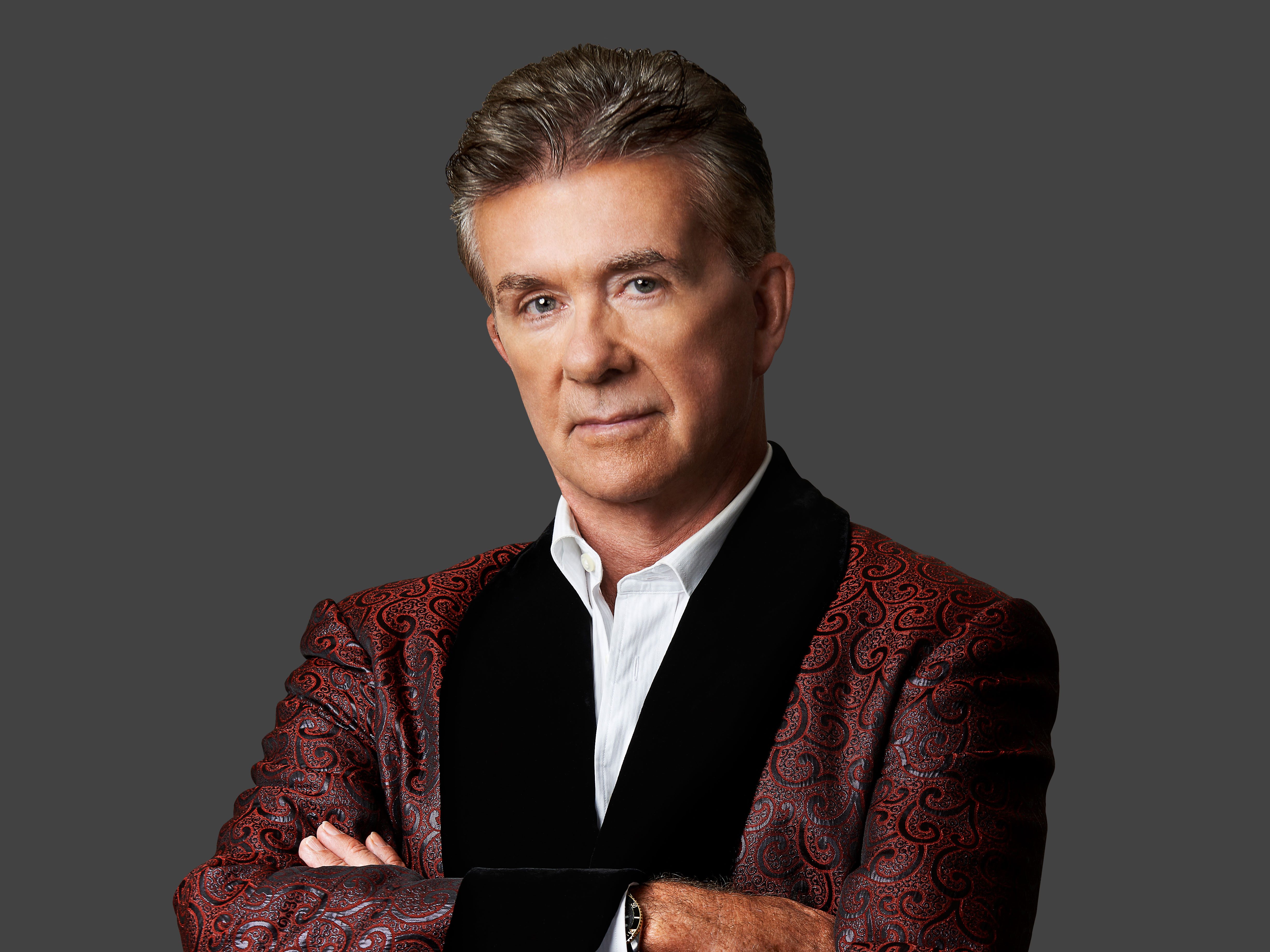Number of servings : 10
Prep time: 20 min.
Cooking time: 40 min.
Type of meal : | Side Dishes | Side Dishes
Special diet : | Vegetarian
Ingredients
Ingredients for Candied-Ginger Sweet Potatoes:
- 4 pounds (2 kg) sweet potatoes, peeled and cubed
- 2 tbsp (25 mL) olive oil
- 1/2 cup (125 mL) maple syrup 1/3 cup (75 mL) crystallized ginger, chopped 1/3 cup (75 mL) apricot preserves
- 2 tbsp (25 mL) butter 1/2 tsp (2 mL) salt
Directions
Directions for Candied-Ginger Sweet Potatoes:
- Place sweet potatoes in a 15 x 10 x 1-in. (38 x 25 x 2.5 cm) baking pan. Drizzle with oil; toss to coat. Bake, uncovered, at 450°F (230°C) for 30 minutes, stirring twice.
- In microwave-safe bowl, combine remaining ingredients. Cover and microwave on high for 1-2 minutes or until heated through. Pour over sweet potatoes; toss to coat.
- Bake 10-15 minutes longer or until tender.
Nutritional information:

Studies in both the United States and Canada have shown that job creation increases and the economy improves as the number of immigrants swells. Immigrants are, as a group, better educated than Canadians, and since 1967, when the government introduced its point system, the selection process favours those with marketable skills.
Is there a market here for skilled labour? Actually, Canada is seeing signs of worker shortages in several professions -including engineers, doctors and nurses, to name a few. Added to this is the fact that the population in some provinces is shrinking, and employers are having difficulty filling their rosters with skilled help. Paul Darby, director of the Conference Board of Canada, estimates a shortfall of 3-million skilled workers by the year 2020.
Boosting immigration could be a very effective way of helping to ease the shortage, but there are other impediments.
Immigrants often have difficulty working in their fields after they arrive. On average, it takes 10 years for immigrants to get hired in jobs for which they have skills and, even then, they are not necessarily working at the skill level to which they have been trained. In March, Jeffrey Reitz of University of Toronto’s Centre for Industrial Relations, released a study showing that immigrants whose skills are underused cost the Canadian economy $2.4 billion yearly. He also estimated that they are underpaid to the tune of $12.6 billion every year. No type of job is exempt. “We used comparisons across the labour force,” says Reitz.
Some organizations are answering the growing demand by helping immigrants become licensed to work in Canada after they arrive. The Ontario Ministry of Education, for example, is spending $12 million over three years to help get more foreign-trained medical professionals – nurses, doctors and pharmacists – into their professions. The money is given to local professionals associations to recruit and retain personnel. Another $3.5 million is being spent by the province to train foreign professionals to ensure they meet Canadian standards.
Yet, at the same time, experts are worried that the flow of immigrants is about to dry up, thanks to legislation coming into effect in June 2011 that changes the rules for people hoping to enter the county. Reitz says the proposed guidelines constitute a much more stringent selection criteria. He theorizes that the government hopes to eliminate a backlog of applicants, which numbers about 660,000 people. The Association of Immigration Counsel of Canada has run dozens of scenarios to determine how many of the 660,000 would be eligible under the new guidelines. “We anticipate that only five to eight percent will be allowed in,” he says. The problem, adds Reitz, is when the backlog is gone but the need for skilled workers remains.
Growing demand for skilled labour is not limited to Canada. In India and China, for instance, the high-tech industry is developing. Workers from those countries who might have had to emigrate to ply their job skills in the past, now have a better chance of finding work at home. Even after skilled workers arrive, it can be a challenge to keep them here: the United States is also eager to attract the best and the brightest.
According to a survey by Canada’s Federation of Independent Business, one out of 20 jobs remains unfilled because of an inability to find suitably skilled labour. This represents about 250,000 to 300,000 vacant jobs in small- and medium-sized businesses alone. The lack is not just in professions that require higher education. The worst off are employers looking for skilled construction workers, who reported 7.7 percent of jobs went unfilled. They are followed closely by the business services and agriculture sectors. Hospitals and the personal service sector ranked tenth at 3.8 percent. The need is greatest in Manitoba, Ontario and Alberta.

We’ve come to think of body mass index (BMI) as the gold standard in measuring our fat, but there is a growing consensus among scientists that it may not be the best tool to do so. According to a 2013 editorial in the journal Science, BMI does not accurately measure the amount and location of body fat (belly fat is more hazardous than evenly distributed fat because it surrounds the internal organs) or the proportion of muscle to fat (muscular types may score in the overweight or obese range).
The researchers point to estimates that 24 per cent of adults with a “normal” BMI actually have symptoms of insulin resistance and a higher risk of heart disease, which may be due to having more body fat and less muscle mass. On the flip side, about one in 10 adults with an “obese” BMI are healthy, possibly because they have a lot of muscle.
Should we say goodbye to BMI?
That depends. BMI is a good tool for policy-makers such as Health Canada when they are assessing whether a large group, like Canadians, is getting fatter, according to Dr. Arya Sharma, professor of medicine and chair of obesity research and management at the University of Alberta. “If you have enough people in a study, BMI does correlate with body-fat composition,” he says. “If you calculate BMI in 1,000 people, the group with the highest results on average is going to have more body fat. But for individuals, the index is almost meaningless. You can find two people with exactly the same BMI, but one has 40 per cent body fat and all of the problems associated with being obese, while the other has 20 per cent body fat and no health problems.”
BMI’s true value is in research, agrees exercise physiology expert Len Kravitz, advisory panel member of CanFitPro, a certification organization for fitness professionals. “With some people, it’s a weak predictor of weight-related health problems.”
Health Canada also recognizes the limitations of BMI for individuals. Its official stand is that assessing an individual’s healthy weight cannot be determined by BMI alone.
Additional factors-such as the degree of lean body mass, ethnic background, lifestyle habits, fitness level and other health risks-also need to be considered, according to Health Canada.
New tools at our disposal
Measures that include waist size appear more effective. In fact, A Body Shape Index (ABSI), which measures height, weight and waist circumference, more accurately predicted death in 14,000 people than BMI in a 2012 study at the City College of New York.
And in a 2012 review of 31 studies, obesity researchers at Oxford Brooks University in England found that waist-to-height ratio (your waist in inches, measured one inch above your belly button, divided by your height in inches) was a better predictor of disease, including cancer, stroke and heart disease, than BMI or waist circumference alone. Both methods are currently used in Canada but not widely.
However, says Sharma, these tools still do not tell you whether your stomach fat is the unhealthy kind. Even a measure of your body-fat percentage-determined by a body-fat scale or with calipers at your gym-won’t do that. “Like BMI, your percentage of body fat isn’t a good measure of health,” he says.
To find out if you are truly at a healthy weight, get assessed at your doctor’s office via checks on blood pressure, cholesterol and glucose levels and a physical exam to check for health risks related to obesity, such as back pain, acid reflux disease, osteoarthritis and sleep apnea. Says Sharma, “No other tool, whether it’s a scale, measuring tape or BMI calculator, is as effective as that.”
BMI 101
Invented by a Belgian mathematician in the 1800s, body mass index (BMI)-weight in kilograms divided by the square of height in metres-has long been used around the world to assess if a person’s weight falls in the healthy range for their height and as a reliable indicator of body fat. If your BMI falls between 18.5 and 24.9, your weight is considered to be in the normal range. A result over 25 means you are overweight (25 to 29.9) or obese (30+).
Want to know your ABSI? Check out this calculator: absi-calc.appspot.com

Q&A WITH PAUL GROSS
Can you explain the title of your film? What is Hyena Road?
A few years ago, I went to Afghanistan to meet the troops. The experience was not at all what I had imagined. It’s a complex, chaotic place, both beautiful and harsh. When I was there, every road they were building had a nickname Canadians would find easy to remember. A lot seemed to be about beer-Route Molson Ice, Route Sleeman. With Route Hyena, the military wanted to the Panjwai district in the region considered to be the birthplace of the Taliban, one of the hardest places to control.
What surprised you most about what you learned over there?
Just how phenomenally complicated counter-insurgency is. To borrow a line from the movie: there is no winning-there’s just an end state laid down by foreign policy.
Do you consider Hyena Road a political movie?
I don’t have a position on whether we should be engaged in these types of conflicts, but once we were there, our military represented us with enormous dignity. I was interested in the semi-blind nature with which wars like this are conducted. I tried to convey the idea that nobody really knows what’s going on. Within the military, a sniper would have little knowledge of what an intelligence officer is doing and [vice versa].
The film has moments of levity: dancing, farting, Skype sex. Was it important to show that quality?
Yes, because soldiers laugh a lot. When death is proximate, you need a giggle.
On to more important matters: this film heralds your silver fox, or, in your case, snowy fox period.
[My hair] has been like this for almost 30 years, but I always dyed it. Two years ago, I visited the Sahara. There was nobody there to dye my hair. I liked how it looked, so I left it.
You have been referred to as a “stubbornly Canadian” artist. What does that mean to you?
I’ve spent a lot of time here, though I’ve worked in the States, too. I feel most at home in Canada, but I’ve also been very lucky to be able to do the things I’m interested in doing here. A lot of people aren’t able to.
What should our film industry be doing to keep talent from defecting?
We need projects for our great talents. William Hutt was a stalwart of the Stratford Festival-he played in King Lear multiple times-but nobody ever made a movie for him.
Speaking of stalwarts: you’ve been married to fellow actor Martha Burns for 27 years, which is hardly the norm in showbiz. Any tips?
First you have to find somebody who is as patient as Martha, because without that, I don’t know where we’d be. I think respect is the most important thing-from respect comes patience.
And when times get tough, you can always pull out your Mountie costume from Due South.
If she gets a little bit criminal, that’s what I have to do.

4 Steps to Forgiveness
Step 1: Calm down
When we wrestle with rage and pain, explains Dr. Fred Luskin, director of the Stanford University Forgiveness Project, our bodies are filled with adrenalin, which makes it difficult to find emotional clarity. “Some people meditate or do relaxation exercises,” he says, which helps them to recalibrate.
Step 2: Shift your focus
Instead of fixating on how and why someone has hurt you, look within. “Seek to understand yourself and your expectations,” suggests Dr. Beth Hedva, a Calgary-based psychologist and the author of Betrayal, Trust and Forgiveness. “Have compassion for yourself and recognize that you have needs that the other person did not, or maybe could not, fulfill.”
Step 3: Find empathy for the person who hurt you
In the moment, it may seem as though others deliberately did you harm, but Hedva stresses that this is often not the case. “Their actions were not necessarily intentional or vindictive, but rather an attempt to get their own unmet needs handled.” The person who failed you, she says, “is also a vulnerable, flawed human being.”
Step 4: Stop thinking like a victim
Changing the narrative is key, says Luskin. “People stay stuck because they have a very rigid, narrow story that keeps them trapped.” Rather than focusing on how your mother undermined you in the past, think about how, as an adult, you have the freedom to make decisions she might not support.
Could you use forgiveness yourself? Check out our tips on How to Apologize.

Travel Insurance: How Does it Work?
When you are planning a vacation on the beach, you need to think about insuring your belongings, but also your health. Most travel insurance policies cover :
- – Trip cancellation
- – Medical expenses
- – Emergency medical evacuation
- – Accidental death
You may also include additional coverage, depending on your needs. If you go on a cruise for example, you could ask to be covered for flood or anything related to your special activities. Make sure you ask your insurance company all your questions before you buy anything in order to get the best coverage for your needs.
Before you buy your coverage, be sure to know about the cancellation policies of your hotels, airline companies and activity providers. Also learn about existing agreements with your credit card company. They often cover some issues such as the loss of luggage. This way, you won’t have to pay twice for the same coverage.
If something was to happen to your health, your insurance will cover the medical expenses and help you find healthcare facilities and services in English if you are in a foreign country.
What To Do in Case of an Emergency?
When in need, you better be ready to react fast. You should make sure that your travel insurance provides a 24-hour emergency number that you can call to get the help of a professional. This person will guide you through all the steps and will be with you every step of the way to get the assistance you need.

Pius Gartner of Kamloops, B.C., says, “I found this tool while cleaning out my mother-in-law’s basement about 20 years ago. It’s made of chrome, has three set screws and is just over five inches long. I’d greatly appreciate if someone could tell me what it is.”
Submit your answers in the comments below or by sending it in through Our Canada’s submission site (please identify it is an entry for “What Is It?”).

How worrying can work in your favour
Of all our mental impulses, worry probably gets the least respect. We chide overly nervous people for being worrywarts; too much rumination causes worry lines.
It’s true that fretting in excess can have significant side effects. Psychologists warn that abiding nervousness can lead to both fatigue and sleeplessness, even intestinal dysfunction. Acute anxiety can affect your focus at work or compel you to seclude yourself from others in the hopes of keeping your phobias at bay. In cases such as these, counselling is likely your best option.
But recent research suggests worrying can also have some surprising benefits. It can help you identify deep-seated concerns and spur you to address them.
Tap into your worry triggers
To harness the productive power of this impulse, the key is to keep it in check. “As with other emotions, anxiety is something we have the ability to shape to some extent,” says Charlie Kurth, an assistant professor of philosophy at Washington University in St. Louis.
One approach is to increase your self-awareness and notice physical manifestations of worry. Once you clue into what your body is telling you, you can try to disarm your anxiety- or, at the very least, better prepare yourself for a stressful situation.
Rather than focusing your energy on the fact that you’re anxious, says Kurth, it’s helpful to address the source of the anxiety itself.
Worrying helps prepare us for threats
What most worries you? Is it danger to your family? Personal failure? Fiery death? The things that spark fretfulness are largely determined by a person’s experiences and general disposition, says Alexander Penney, a psychology professor at MacEwan University in Edmonton.
“You often need to know someone’s entire life story, and especially key moments in their life, to know why they focus on the worries that they do,” says Penney.
When something causes concern, it activates the amygdala (the part of the brain associated with emotional responses and decision making) and hippocampus (the area connected to memory consolidation). Maybe you’ve inadvertently walked into a dodgy neighbourhood, or you’re at a party and just spotted your ex-girlfriend. Your central nervous system may trigger the release of the stress hormone cortisol, causing your heart rate to spike.
It’s unsettling, sure, but the first inkling of anxiety serves us well, says Kurth, because it can heighten our awareness of potential danger and force us to gather more information about the situation to better address the uncertain threat we face.
In that dodgy neighbourhood, you might try to find a better-lit, more populated area, or else flag a cab. At that stressful party, you might plan a stealthy escape or devise a line of conversation that might make a run-in with your former flame less excruciating.
Worrying is often a sign of intelligence
Given its problem-solving benefits, worry may also be a sign of increased brainpower. During his graduate studies at Lakehead University in Thunder Bay, Ont., Penney explored the connections between emotional disorders and intelligence. Using a sample group of undergraduate students, he and his colleagues found that those with higher verbal aptitude-a greater vocabulary and ability to articulate complex ideas- tended to report higher levels of worry and rumination.
A 2012 study published in Frontiers in Evolutionary Neuroscience found a correlation between both high intelligence and anxiety and the depletion of the nutrient choline in one area of the brain, suggesting the two traits may have evolved in tandem. Lead author Jeremy Coplan told ScienceDaily that worry may prompt many of us to avoid threatening situations, which likely means those people have a higher survival rate. So if you’re a nervous Nellie by nature, take heart: it’s possible all that worry may be a key to evolutionary success.

Q&A With Alan Thicke
The new season of Unusually Thicke, the reality show and sitcom hybrid built around your family life, is airing on HGTV Canada. Would you say it’s closer to I Love Lucy or Keeping Up With the Kardashians?
We fall kind of in the middle-like a cross between Here Comes Honey Boo Boo and Curb Your Enthusiasm.
Though it owes a debt to classic sitcoms like, well, Growing Pains.
Familiar sitcom devices were crucial to our concept: tell two stories in a single episode and have them intersect, peak in certain places and include elements of conflict and resolution. It was important that one of us [on the writing staff] had paid his dues in sitcoms.
Your cred in that area is unimpeachable: you worked with Norman Lear.
I produced two Norman Lear series, I worked with him on a screenplay that never got made, and I wrote the theme songs for his shows The Facts of Life and Diff’rent Strokes. When my son Carter was applying to university, the most impactful letter of recommendation he sent in was written by Norman. All these years later, good relationships pay off.
You’re both a star and an executive producer on the show. What’s it like to produce your day-to-day life?
The biggest challenge is to be real, by definition of being a reality show, and to be amusing, by definition of being a sitcom. Beyond that, the toughest thing has been protecting the family. I don’t want to embarrass my wife or my son or myself.
You grew up in Kirkland Lake, Ont.-not exactly a showbiz capital. How did you cultivate your taste for entertainment?
My grandmother, my mother and my father were interesting, funny people. They appreciated the entertainment business and had their favourite performers. So I was surrounded by that kind of laughter and fun. I think enjoyment of entertainment in your environment is important-it doesn’t matter whether you’re in Kirkland Lake or West Hollywood.
Over the years, you’ve become one of Canada’s most recognizable exports. Why are Americans so fascinated with our culture?
One thing that makes us unique is the fact that, a generation ago, we were influenced not only by American sitcoms and movies but by British comedy. We saw Monty Python and Marty Feldman and Benny Hill long before the Americans did. There’s a sense of absurd performance art we bring to comedy, to the great fascination of Americans.
You’re also known as America’s favourite dad. What lessons have you tried to impart to your three sons?
I don’t have deep dark secrets or crazy behaviour patterns. The Jason Seaver character from Growing Pains and the Unusually Thicke character are pretty close to each other. If I could sum up what I hope they’ve learned: kindness, a work ethic, sincerity, love. I’m a pretty corny guy. Work hard and be nice. That would be on my gravestone. That would be my epitaph.
The third season of Unusually Thicke airs on HGTV Canada.
